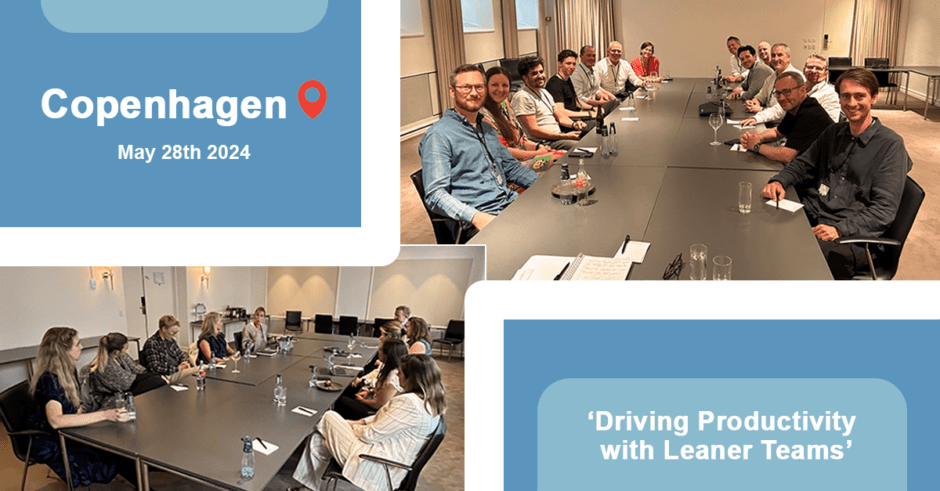The world of work has evolved at an unprecedented scale. Since the turn of the century, there has been mass hiring and layoffs, huge growth, large periods of job freezing and a monumental shift in the workplace. Some may consider this sort of change as the evolution of work but this is a revolutionary change.
We brought together a group of senior executives across HR, Technology and Go-To-Market for a fascinating discussion about how the changing demands have resulted in leaner teams and how we can still be striving for productivity.
The conversation was split into 2 tables, which were hosted by Becky Finnegan (Associate Director at Annapurna) and Joshua Emptage (Director at Annapurna). This brought about the following takeaways:
Focus on Sustainable Productivity & Employee Wellbeing
One often overlooked thing is ensuring everyone is on the same page. For example, ‘how do we as an organisation define productivity?’
There will always be areas of the organisation where productivity is harder to quantify into direct revenue, such as software developers but we must ensure this discussion is had before any initiatives are rolled out.
The group emphasised that true productivity goes beyond just immediate output. It’s about creating a healthy organisation where employees can be consistently productive. This includes factors like work-life balance, clear communication, and feeling valued. We must find out what employees are wanting or missing from their work. Is it recognition? Money? Development?
Finding the Balance Between Focus and Innovation
Whilst a sharper focus can boost efficiency, it’s important to maintain room for creativity.
How are you keeping your teams inspired if downsizing or going through tough times? The group discussed the ever need for diverse perspectives and ensuring we are fostering psychological safety, where employees feel comfortable sharing ideas without fear of judgment. This mindset is especially important after some of the organisational restructuring and layoffs that have occurred recently.
The shift in organisational design means that we as leaders must figure out how to get more of our teams with new structures and fewer resources at our disposal. A common occurrence was that of inflated job titles during periods of struggle for companies so there was a discussion around how to combat this by stripping back job titles and creating ‘teams of teams’ This agile way of working results in hierarchical structures being less important and everyone having a duty for a task.
The potential of skill-based hiring using personality and logic tests to build strong, compatible teams is huge. This approach would allow organisations to define key competencies, hire people without bias, remove CVs and introduce personality and logic tests. Many organisations now have aspirations for a skill-based hiring process but there are many steps ahead for a successful implementation.
Transparency & Psychological Safety are Key for Lean Teams
Effective communication and trust are crucial for success with leaner teams.
How are you navigating and balancing sharing too much with employees with transparency? The views of the CEO are vital to influencing these levels and are indeed differing across industry.
The group spoke openly about how some of the businesses shared insights from board meetings and financial insights to the wider employee groups which helped to stem empowerment and create camaraderie for teams. On the opposite side to this, some leaders try to ‘protect’ employees from certain messages, which can create their own problematic aspects.
One of the main points of conversation was around how leadership teams are finding out first-hand information from employees on the ground. Creating a safe space for feedback through surveys and “stay interviews” allows employees to voice concerns and feel heard. Acting on this feedback is imperative for employees to truly trust in their employer, otherwise it can backfire quickly.



